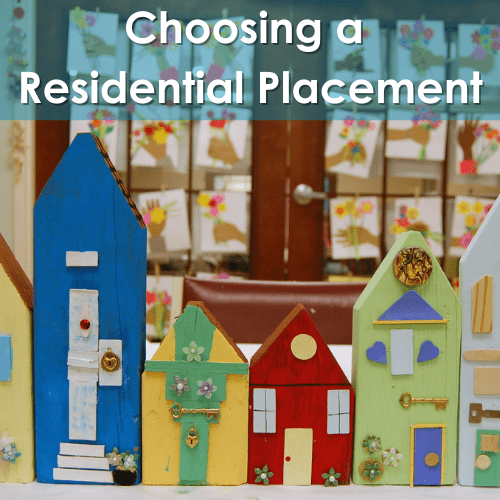Choosing a Residential Placement
Thursday March 2, 2017

Being a caregiver is incredibly stressful: addressing daily care needs, managing bills, going to medical appointments, making meals, and keeping up the house. In addition to these things, making decisions about your loved one’s care is difficult. Caregivers spend a great deal of time stressing over if they should place a loved one in a residential care facility and wondering which facility is the right one.
If you’re feeling overwhelmed by a care decision, take a breath. We’re here to help. These are our best tips on choosing a residential placement. If you have questions after reading this, be sure to give us a call (901-854-1200) or stop by, we would be happy to answer questions and provide support for you and your specific situation.
Step 1: Decide your breaking point.
The big question: “When is the right time to move my loved one to a residential facility?”
There’s no one answer to this question. In our experience, most caregivers have a breaking point in what they can manage at home. For each caregiver, that breaking point is different.
Some examples of stages your loved one might reach that could be a breaking point:
Not sleeping at night and disrupting sleep for the rest of the household
Incontinence
Hoarding becomes excessive
Choking on meals consistently
Choose YOUR breaking point. There is no right or wrong time other than waiting too late. When you wait too late, you suffer and don’t manage your own self-care. As a result your loved one suffers because you can no longer provide adequate care.
Step 2: Determine your loved one’s appropriate level of care.
How do you know what level of care is appropriate – traditional assisted living, memory care, nursing home? We suggest asking your loved one’s physician, consulting with a geriatric care manager, or having a facility admission coordinator assess your loved one to make appropriate recommendations.
Step 3: Do your research.
Ask around. What experience have others had with the facilities you are considering? Also, think about location and cost. If you’re planning to visit your loved one often, it would be wise to choose a facility that is within reasonable driving distance from home and/or work.
This is another step when a geriatric care manager may be of great help to you. He or she can help you narrow down the pool of facilities to consider.
Step 4: Take a tour.
Go out and look. Tour several facilities to see what is out there. It is always best to know about the options in the area, so you can make an informed decision when/if the time is right for you.
Take both scheduled and unscheduled tours. Show up unannounced (maybe at mealtime or on a weekend) to see how things are when staff are not prepared for you to be there. It is important to have a scheduled tour as well. Scheduled tours ensure that the correct staff person will be available to give you the information you need. Understand that not every staff member will be able to answer your questions, so be sure to ask the right person.
*Due to COVID-19 precautions, some residential facilities may not be allowing drop-in tours or in-person tours at this time to keep their vulnerable population safe, so please call and check on their policy beforehand.
When taking a tour, there are lots of things to consider and observe, but don’t stress too much. You can always take a second or third tour if needed. When you tour, use your five senses:
SOUND
Do you hear staff talking with residents, including them in conversations?
Is staff speaking kindly to residents and one another?
Does staff call residents by name?
Is there music playing? Is it appropriate and soothing music?
SIGHT
Is the facility nicely decorated?
Is there natural light?
Does it look clean and orderly or chaotic?
Ask for a menu. Does the food look appealing?
Are people smiling?
What do you see the residents doing? Are they watching Jerry Springer or something more appropriate? Are they staring off into space, or do you see them engaged in an activity?
TASTE
If you have a meal at the facility during your tour (which is not necessarily common), does the food taste good?
TOUCH
Are the floors sticky?
Are the tables still sticky from the previous meal?
Are there items around for the residents to use? Games, puzzles, sensory items?
Is staff providing physical reassurance and attention to residents, such as a hug or a pat on the arm?
SMELL
How does the facility smell? Do you smell lunch cooking, or does it smell like bleach?
Is there an odor of old urine? If someone has just had a bowel movement then there will likely be an odor, but it should not be a permanent smell.
The best facility is not necessarily the newest/most expensive facility, and the worst facility is not necessarily the oldest/cheapest. There is no one facility that is the best for everyone. Each person and family is different. Different places for different needs.
Bonus Step: Be an advocate.
Once you have chosen a facility and moved your loved one in, know that you are still your loved one’s caregiver. You are still his or her advocate. It is important that you visit, check on your loved one, and make sure that appropriate care is being provided.




